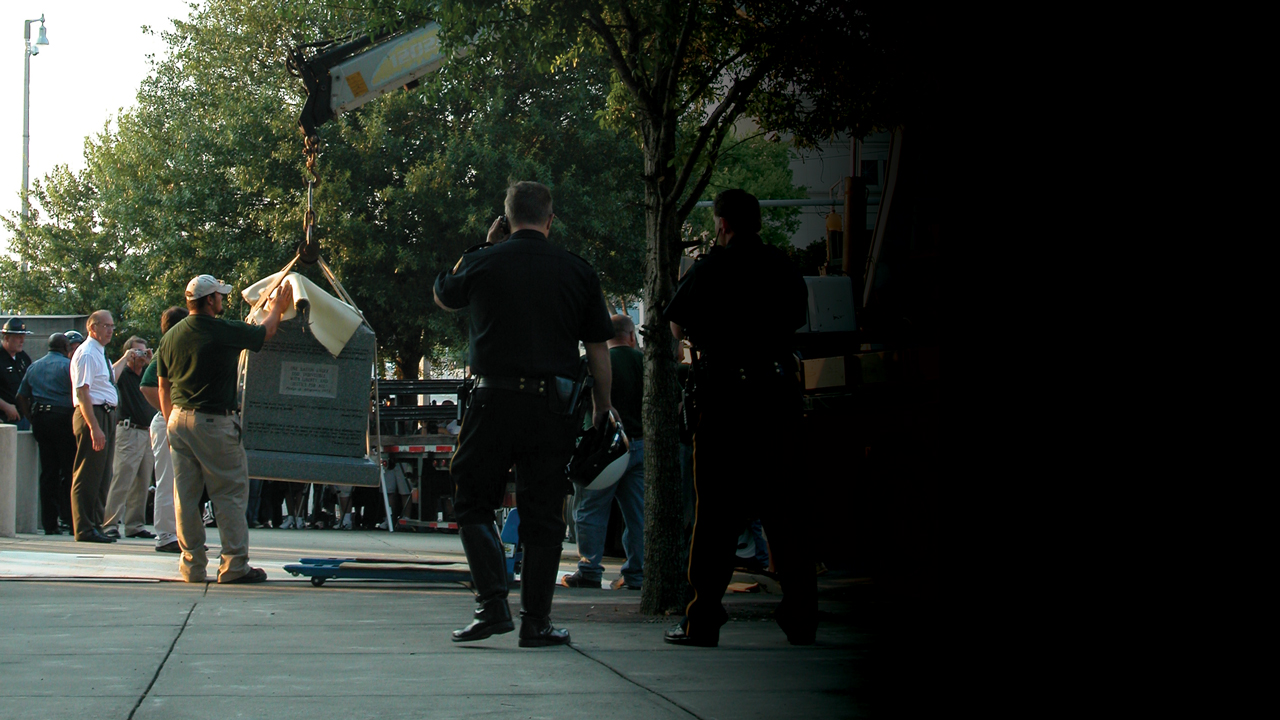Former Alabama Chief Justice Roy Moore, defendant in the Center's successful Glassroth v. Moore lawsuit, was removed from office today by Alabama's judicial ethics court.
MONTGOMERY, Ala. | Alabama Chief Justice Roy Moore was removed from office today by the Alabama Court of the Judiciary for ethics violations stemming from his defiance of a court order to remove a Ten Commandments monument from the state’s judicial building.
The nine-member court ruled unanimously (download a PDF of the judgment). It said it found “no other viable alternative” to Moore’s removal after hearing “clear and convincing evidence” presented by Alabama attorney general Bill Pryor during a one-day trial yesterday.
In August, Moore blatantly defied a federal court order to remove a 5,280-pound Ten Commandments monument from its prominent location in the Alabama’s judicial building.
“Justice was served today,” said Richard Cohen, president of the Southern Poverty Law Center. “A public official who defied the law was removed from office. We congratulate the attorney general and the members of the Court of the Judiciary for their courage. They stood up to a popular political figure and said, ‘No one is above the law.’”
Moore’s refusal to obey the order calling for removal of the monument resulted in his suspension by the Alabama Judicial Inquiry Commission on August 22.
On November 3, the U.S. Supreme Court refused to overturn a lower court’s decision that his placement of a Ten Commandments monument in the rotunda of the state’s judicial building was unconstitutional.
The former Chief Justice shocked the state in August 2001 when he installed the imposing monument without consulting his fellow justices. Under the cover of night, he secretly hauled the granite sculpture into the building that houses Alabama’s appellate courts and the state law library. A video team from the Florida-based Coral Ridge Ministries, which raised money for Judge Moore’s defense in the case, was on hand to film the occasion.
Center attorneys brought the case against Moore (see Glassroth v. Moore), along with the ACLU and Americans United for the Separation of Church and State, on behalf of three Alabama attorneys who felt the monument expressed state-sanctioned intolerance of religious beliefs different from those of the former Chief Justice.
In July, a federal appeals court upheld U.S. Judge Myron Thompson’s ruling that the placement of the monument was an “extreme case” that “create[d] a religious sanctuary within the walls of a courthouse.”
Moore defied the court’s order and refused to remove the monument, drawing a crowd of supporters, including many far-right extremists, to the judicial building. The monument has since been moved from public view.



